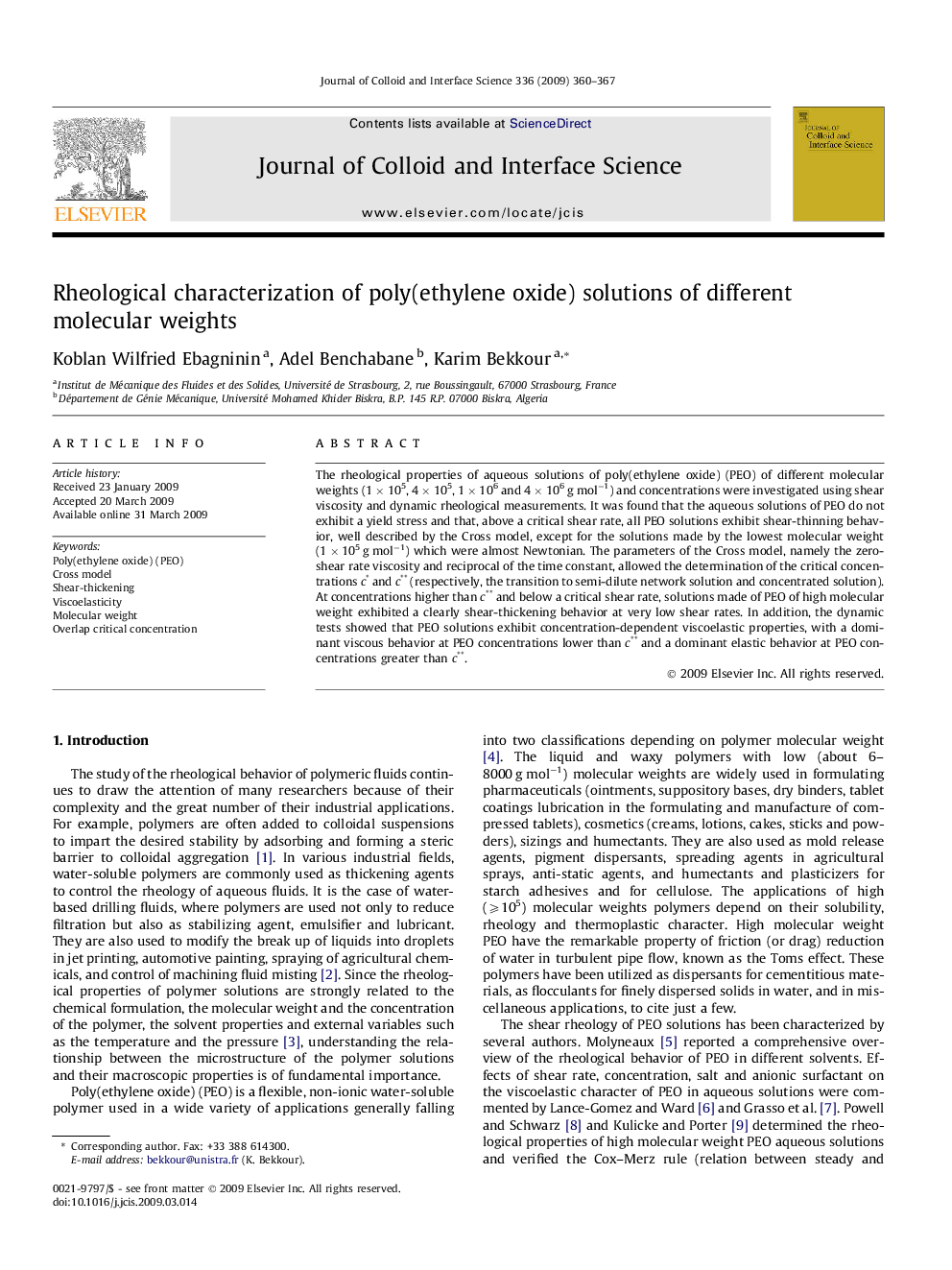| کد مقاله | کد نشریه | سال انتشار | مقاله انگلیسی | نسخه تمام متن |
|---|---|---|---|---|
| 610378 | 880647 | 2009 | 8 صفحه PDF | دانلود رایگان |

The rheological properties of aqueous solutions of poly(ethylene oxide) (PEO) of different molecular weights (1 × 105, 4 × 105, 1 × 106 and 4 × 106 g mol−1) and concentrations were investigated using shear viscosity and dynamic rheological measurements. It was found that the aqueous solutions of PEO do not exhibit a yield stress and that, above a critical shear rate, all PEO solutions exhibit shear-thinning behavior, well described by the Cross model, except for the solutions made by the lowest molecular weight (1 × 105 g mol−1) which were almost Newtonian. The parameters of the Cross model, namely the zero-shear rate viscosity and reciprocal of the time constant, allowed the determination of the critical concentrations c∗ and c∗∗ (respectively, the transition to semi-dilute network solution and concentrated solution). At concentrations higher than c∗∗ and below a critical shear rate, solutions made of PEO of high molecular weight exhibited a clearly shear-thickening behavior at very low shear rates. In addition, the dynamic tests showed that PEO solutions exhibit concentration-dependent viscoelastic properties, with a dominant viscous behavior at PEO concentrations lower than c∗∗ and a dominant elastic behavior at PEO concentrations greater than c∗∗.
The PEO solutions flow curves were correlated by the Cross model. The polymeric states of PEO solutions were identified by plotting the Cross model parameters η0 and 1/λ vs. PEO concentration.Figure optionsDownload as PowerPoint slide
Journal: Journal of Colloid and Interface Science - Volume 336, Issue 1, 1 August 2009, Pages 360–367